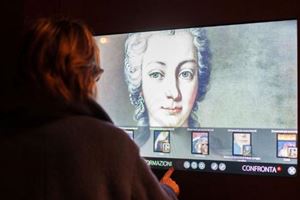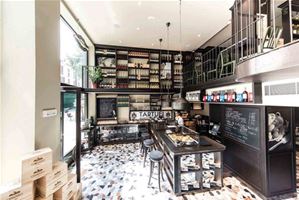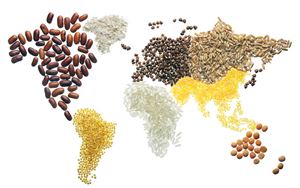The last time a contemporary British artist’s work was showcased in a prestigious Florence venue was last year when Damien Hirst‘s diamond skull was displayed in Palazzo Vecchio. Now Florentines have a new opportunity to encounter contemporary British art, this time the work of Paul Fryer, Hirst’s close friend and fellow countryman from Leeds.
A multifaceted artist, Fryer recently came to Florence to unveil installations in one of the city’s newest contemporary art spaces, the second floor of the Gucci museum. The space, located in Palazzo della Mercatanzia’s deconsecrated chapel, will show new works from the François Pinault collection two or three times a year. When the museum opened its doors in September 2011 (see TF 151), the first of the rotating exhibits featured the video art of American artist Bill Viola (see TF 124).
The current exhibition, Lo Spirito Vola (‘The Spirit Flies’) is curated by Francesca Amfitheatrof and features three new works by Fryer that, as did Viola’s work, evoke religious and spiritual reflections. And Fryer’s transcendent contemplations are indeed appropriate for the days leading up to Easter, the most important event in the Christian calendar.

Fryer’s Pietà (the Empire Never Ended), a moving work that depicts a battered and bruised Christ in wax seated on an electric chair, has strong spiritual implications. Within the modern machine, the lifeless Christ figure is in a classic pose; the straps of the chair have been undone, and the execution concluded. The figure, about two-thirds smaller than life size, is meant to trigger a chain of emotions in the viewer, Fryer explains: ‘The reduced scale is meant to induce a sense of protection and grief in the viewer over such a tortured death.’ To make the wax figure appear more convincing, the artist spent at least six months creating it, applying each strand of human hair individually. He also inflicted the bloody gashes, something he said was
tough: ‘I actually had to take break at a certain point because it seemed to be so real, even for me.’
The work is a spiritual meditation on the human condition, in which the violence and pain arising from forms of capital punishment coexist with concern and compassion. What was yesteryear’s most common form of capital punishment, death on the cross, has become today death by electrocution. By inserting Jesus in this modern form of execution, Fryer evokes the iconographic power of the crucified Christ.
However, the power and extreme realism of Fryer’s modern-day rendition of the pietà has not always been met positively. The piece made waves in 2009 when it was on display during Holy Week in the Cathedral of Gap, in southern France, and both Fryer and the Diocese of Gap were accused of sacrilege. Fryer defended his work, saying, ‘I wanted the provoked shock to make us once again conscious of the scandal of someone being nailed to a cross … Usually, one does not feel any real emotions in front of something really scandalous: the Crucifixion. If Jesus had been sentenced today, he would have to reckon with the electric chair or other barbaric methods of execution. Scandalous is therefore not Jesus in the electric chair, but the indifference to his crucifixion.’
Fryer’s Ophelia, which is also part of the Pinault Collection, similarly seeks to take the viewer into a spiritual dimension. In his rendering, Ophelia, a character who commits suicide by drowning in Shakespeare’s Hamlet, floats in a rectangular glass bath of translucent silicon, with her open eyes and outstretched arms, seemingly suspended between this world and the next.
Ecce Homo, from the artist’s private collection, complements the other two. Defying gravity, a black egg floats above a nest of thorns, alluding to the posibility of spiritual ascent that challenges the laws of science.
Simon Hitchman’s Ascent into the Maelstrom, a documentary about Fryer’s work, accompanies the exhibition.
ABOUT THE ARTIST
Paul Fryer grew up in Leeds. He studied art briefly at the Leeds College of Art in the 1980s but did not take a degree, opting instead to become an electropop singer, and then a DJ. In the early 1990s he was instrumental in the creation of two widely acclaimed art-based clubs in Leeds, the Kit Cat Club and Vague. In 1996 he moved to London, where he lives and works today. He has designed books and has created print and audio material for several artists, fashion houses and record labels. Fryer’s works have appeared in galleries and museums across Europe, and he will be holding two major exhibitions in Italy in 2012, in Naples and Turin. See more of his work at www.paulfryer.net.







